Most of the public authorities, in recent years, have invested heavily to improve the pedestrian mobility of the blind and visually impaired.
To solve this problem, CEBIC proposes and implements the LVE (Loges Vet Evolution) tactile path that allows people with visual impairments full autonomy for travel in public places without the aid of assistance.
The purpose of the LVE tactile path is to transmit an immediate perception to the visually impaired through the raised lines to follow the desired direction, and a feeling of distinct discomfort in the dangerous points through the non-passable danger code.
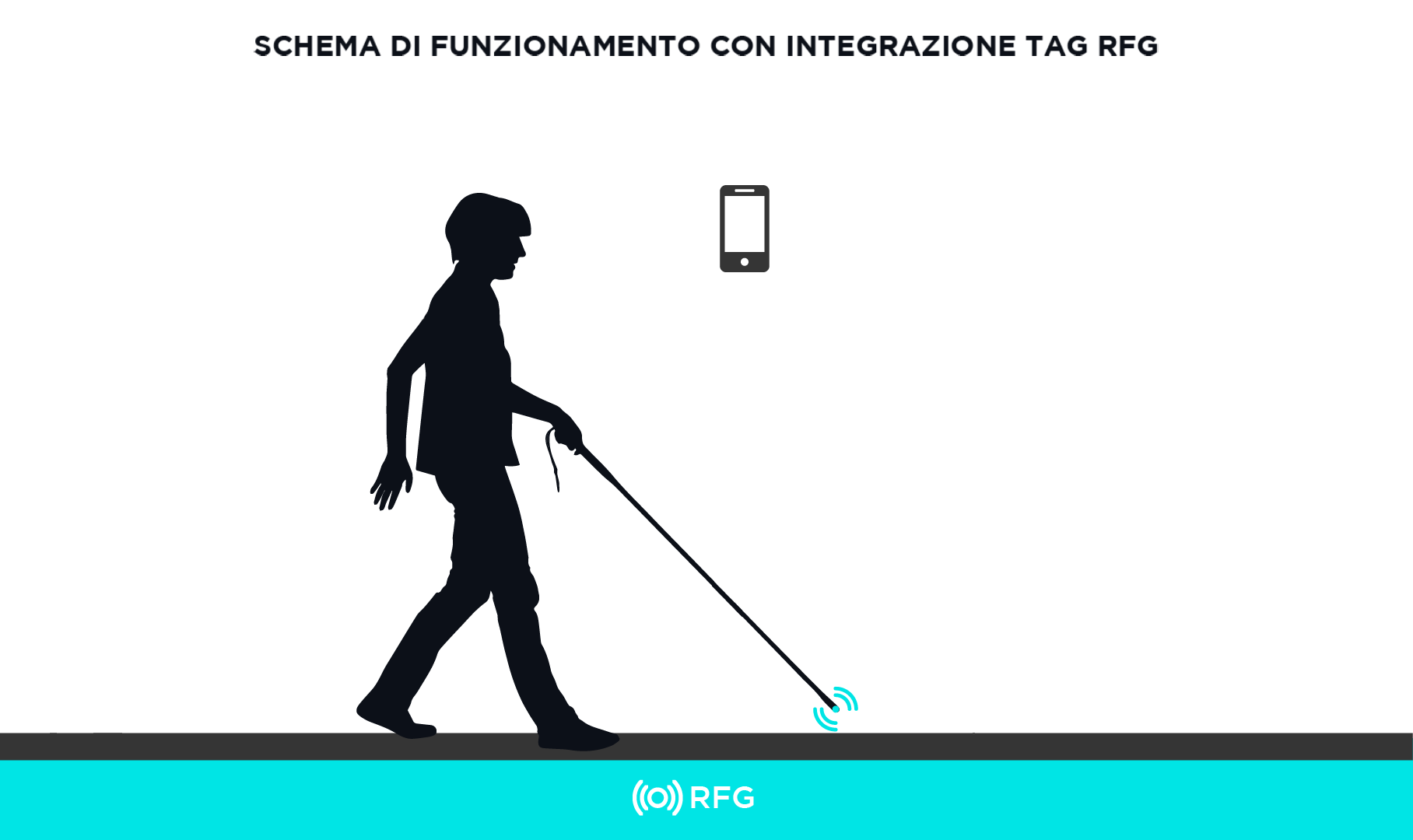
UTENTE:
L’utente ascolta i messaggi dal suo smartphone in vivavoce, cuffia o tramite un auricolare bluetooth.
SMARTPHONE:
Il dispositivo deve essere dotato di apposita app LVEsystem, disponibile gratuitamente su Play Store ad Apple Store
BASTONE ELETTRONICO T-STICK:
Bastone con antenna integrata che legge i tag RFC (installati sotto la pavimentazione) e dialoga attraverso il protocollo bluetooth con lo smartphone
LVE
TRANSPONDER:
I transponder sono di tipo passivo RFG
In recent years, technology has made great strides also on this issue, in fact the LVE tactile path is approved by the I.N.M.A.C.I. National Institute for Autonomous Mobility of the Blind and Visually Impaired. LVE HOME is equipped with a series of passive microchips (PREDISPOSITION ONLY) in which guide messages can be recorded in various languages. In order to use this system the blind person must have an electronic stick which transmits the voice message through an application downloadable on any mobile device..
The recognition of tactile signals through the stick occurs naturally without information confusion and in maximum safety.
THE 6 TACTILE CODES.
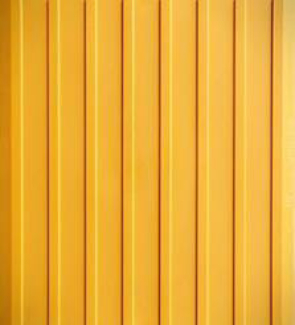
1: STRAIGHT DIRECTION.
It consists of a series of grooves parallel to the direction of travel; the curbs or bars that delimit the canals must have a width and a relief specifically designed, necessary and sufficient to be easily perceived, without however constituting an impediment or discomfort in walking neither for the able-bodied nor for people with motor disabilities. The channels formed in this way perform the function of a real track for the tip of the white stick. For this purpose, the bottom of the channels must be absolutely smooth to allow better sliding, while the upper part of the curbs is rough in non-slip function.
Of course, the stick can also be used with the classic commuter bike. The width of the guided path or tactile track is 60cm.
This code is easily and intuitively recognised by the blind as a STRAIGHT DIRECTION signal, as the net step present between the bottom of the channels and the upper part of the curbs informs his kinesthetic sense of the existence of a regular and parallel difference in height at each step to its direction of travel.
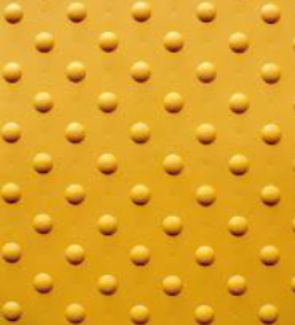
2: STOP / DANGER.
It is a band bearing spherical caps measured gradually by about 5mm with respect to the plane from which they rise, arranged in a diagonal grid. This height is necessary so that they are surely felt under the feet and to make a prolonged stay on them uncomfortable. This sign indicates to the visually impaired person that it is forbidden to go beyond it due to the existence, beyond it, of a danger. This Code is also used internationally to indicate the buffer zone on the edge of railway platforms or subways and, in these cases, its width must necessarily be at least 40cm, in order to prevent it from being unintentionally bypassed without a foot getting on it, while its length must cover the entire danger zone. The measurement of 40cm is sufficient when the signal is placed parallel to the normal direction of travel (for example on the edge of a railway platform).
It has been argued by some that a depth of 40cm may not be sufficient. This doubt arose on the basis of a statistic according to which the average stride length of an adult is calculated as 60cm; this objection is unfounded, as it does not consider that, for the purposes of perceptibility under the feet, the measurement must be taken from the toe of the rear foot, up to the heel of the advanced one: from tests carried out with hundreds of sighted, this distance is usually less than 30cm.
The danger sign will have a depth of 60 cm, when placed in such a way as to be intercepted perpendicularly by the blind, as on the bottom of a railway platform.
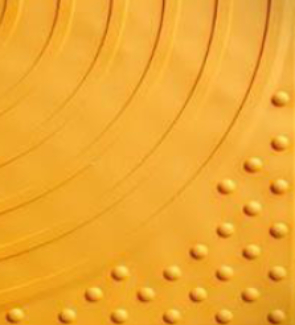
3: MANDATORY TURN AT 90°.
It is used to effectively connect two sections of a straight path at right angles; it is a square of 60cm on each side, with curvilinear channels, perfectly aligned with those of the STRAIGHT DIRECTION code, much appreciated by the blind because they facilitate the channeling of the tip of the stick and make the execution of the curve completely automatic.
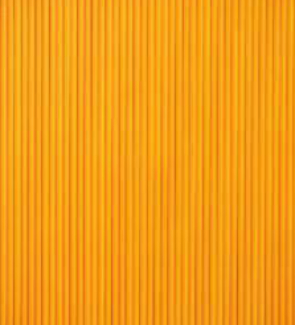
4: ATTENTION / SERVICE.
As the name implies, it serves to give general attention or to signal the presence of a service adjacent to the tactile track.
It should never be placed as an isolated sign, but has reason to be used only when it is inserted in a guided path or tactile track, since in this situation it will be clearly identified under the feet as the absence of the curbs of the STRAIGHT DIRECTION code, while with the tip of the white stick, made to slide in the channels, is perceived in the form of a typical vibration caused by the ruling across the path.
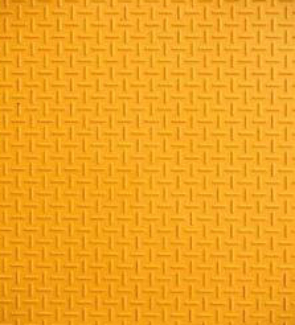
5: CROSSING OR T- CROSSING.
It consists of a square-shaped surface, 60cm side, bearing small segments arranged in a checkerboard pattern, perpendicular to each other, so that the tip of the stick senses a slight obstacle through the perception of a series of light bumps.

6: PASSABLE DANGER.
It consists of the combination of two codes: a 20cm strip of ATTENTION / SERVICE code, immediately followed by a strip of STOP / DANGER code, also 20cm long; it is intended to protect an area that must be used with great caution such as a pedestrian crossing or a descending staircase.
The PASSABLE DANGER Code can also be installed outside a tactile track, given that the law also requires the reporting of stairways or slides that can be reached without the aid of the guide path. In this case, for greater safety, you can also repeat the signal 2 times in a row.
ADVANTAGES:
Quick installation Resistance to accidental heat Abrasion resistance
Resistance to UV rays Easily recognisable Antiskid
Resistance to temperature changes
FEATURES:
Available in different colours, also on request They can be applied on any surface excavations or demolitions not needed
Easy and fast to apply Easily recognisable Permanent and constant elasticity
QUALITY AND SKILLS
All our exclusive products have been tested in the ANAS and GFC CHIMICA laboratories, and we are proud owner of the certification from the University of Bologna.
WHO WE ARE
CEBIC URBAN DESIGN S.R.L.
P. IVA: 02737060646


